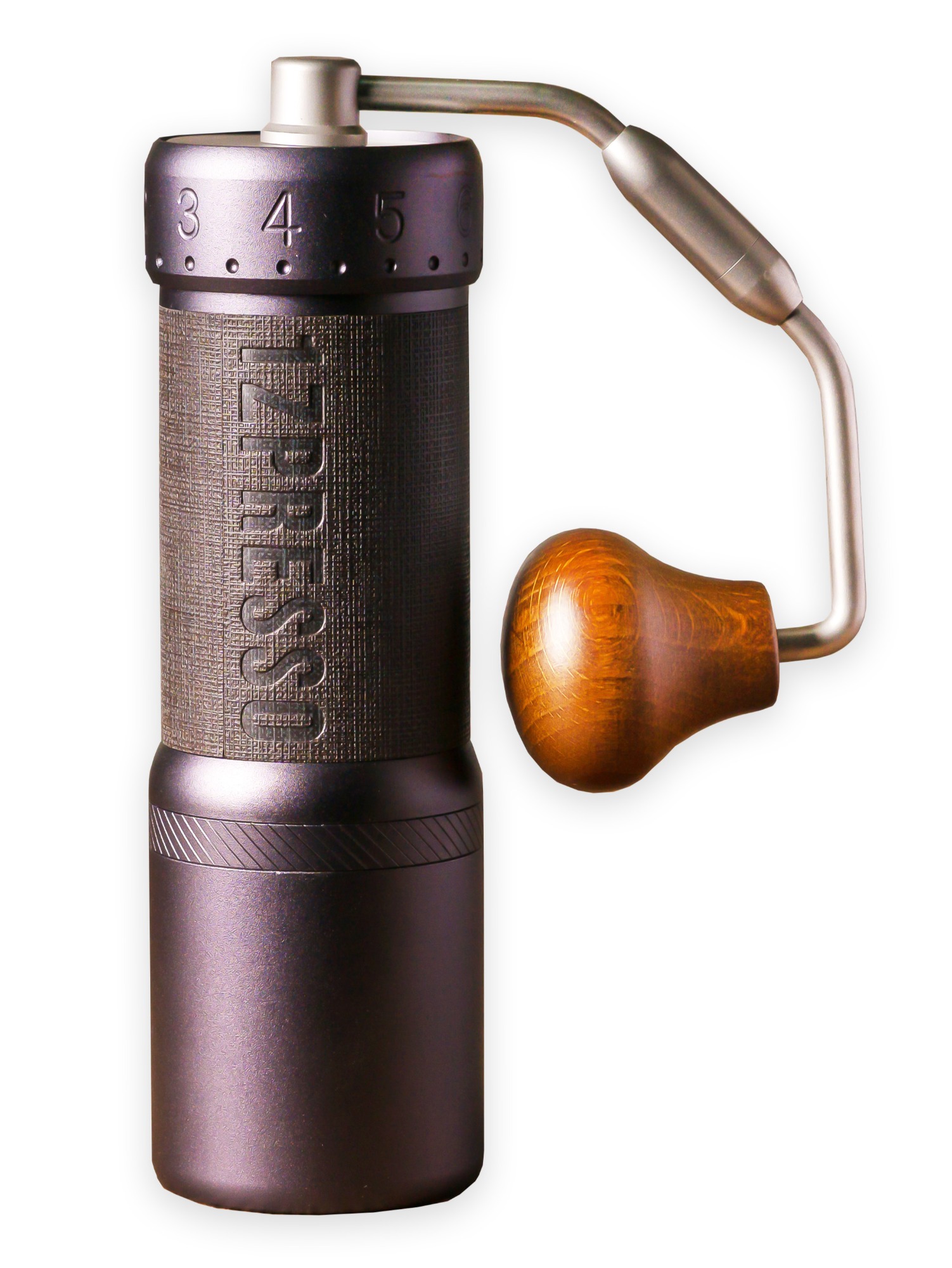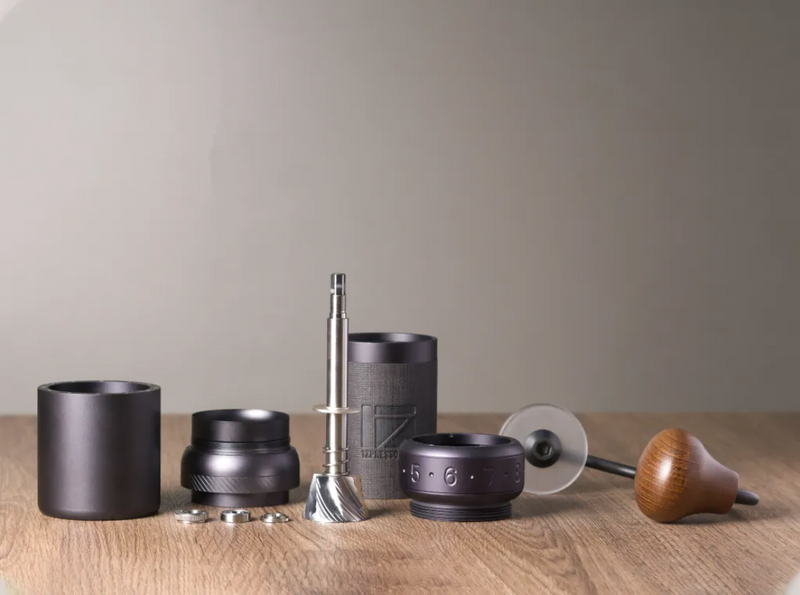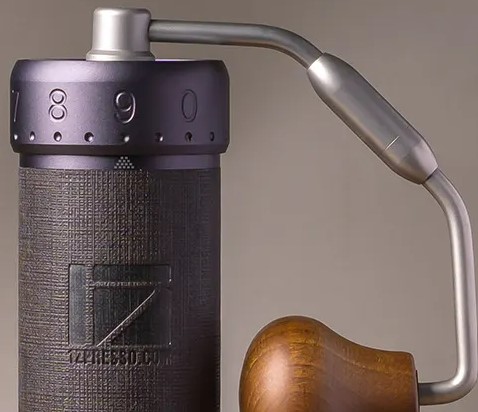Elevate Your Coffee Experience with 1Zpresso J-Ultra: A Barista's Desire
Master the Art of Grinding Coffee Beans: An Overview to Coffee Grinders
For coffee fanatics, the procedure of grinding coffee beans is even more than simply a routine job; it is an art kind that can greatly affect the taste and quality of the final mixture. Understanding the subtleties of different grinder types, picking the proper work size, and employing the right techniques are crucial actions in the direction of achieving that excellent mug of coffee.
Sorts Of Coffee Grinders
There are three primary types of coffee mills commonly utilized by coffee lovers: blade mills, burr grinders, and hand-operated grinders. Blade mills are the most fundamental kind, making use of a basic blade to cut the coffee beans. While they are affordable and very easy to make use of, they often result in unequal coffee premises due to irregular grinding.
Manual grinders, as the name suggests, call for manual initiative to grind the coffee beans. They are frequently preferred by those that appreciate the process of hand developing coffee or for those who value transportability. Hand-operated grinders can vary in style, from basic portable versions to a lot more complex kitchen counter variations. While they may require even more effort, manual grinders use control over the grinding procedure, enabling customers to adjust the work size to their choice. Each sort of coffee grinder has its benefits and suitable usage situations, dealing with the varied choices of coffee lovers.

Selecting the Right Work Dimension
With an understanding of the different sorts of coffee grinders, the following essential action in achieving the ideal mug of coffee is selecting the best work size. The work size plays a substantial role in establishing the flavor profile of your coffee (1Zpresso J-Ultra). Different developing techniques require particular work dimensions to enhance the extraction of tastes from the coffee premises
For a rugged work, perfect for French press and chilly brew approaches, the coffee beans must appear like breadcrumbs, providing a robust and strong flavor. Medium-coarse grinds, appropriate for Chemex or Clever Dripper, have an appearance similar to coarse sand, offering a balanced preference.
Medium grinds, frequently utilized in drip coffee makers, have a consistency resembling regular sand, leading to a well-shaped flavor. Great grinds, best for espresso devices, belong to table salt, producing an abundant and extreme preference. Finally, extra-fine grinds, used in Turkish coffee, are as great as powdered sugar and generate a strong and powerful brew.
Grinding Strategies for Ideal Taste
To extract the max capacity of flavor from your coffee beans, grasping proper click for info grinding techniques is crucial. Uniformity is vital when it pertains to grinding coffee beans for ideal flavor. Making sure that the coffee beans are ground evenly is essential to attain a well balanced removal throughout the brewing process. Among the basic techniques for enhancing taste is to change the work size based on straight from the source the developing technique being utilized. A great grind is ideal for espresso equipments, while a coarse grind is much more suitable for French press developing. Furthermore, the grinding time plays a substantial role in flavor removal. Over-grinding can bring about a bitter taste, while under-grinding might cause a sour taste. It is advised to trying out different work sizes and brewing times to locate the ideal equilibrium that suits your taste choices. By focusing on these grinding techniques, you can raise the flavor profile of your coffee and take pleasure in a more satisfying mug every single time.
Maintenance and Cleaning Tips

In enhancement to regular cleansing, it is important to evaluate your grinder for any indicators of wear or damage. Examine the blades, burrs, and various other elements for any type of monotony or malfunctions. Change any damaged components without delay to maintain the high quality of your coffee work. Shop your grinder in a dry and clean environment to stop any kind of dampness or dust from impacting its performance. By complying with these maintenance and cleaning tips, you can make sure that your coffee mill proceeds to supply scrumptious fresh ground coffee for several years to come.
Troubleshooting Common Mill Issues


Ensuring your coffee grinder works efficiently calls for skilled troubleshooting of usual concerns that may occur throughout its usage. One typical issue with coffee grinders is irregular work size.
This can happen when oils from the the original source coffee beans construct up and obstruct the grinder's chute. To resolve this, disassemble the mill and tidy all components extensively, paying special focus to the chute and burrs.
Finally, if your mill is producing extreme noise during procedure, it can show a problem with the electric motor or interior components. In such cases, it is a good idea to seek advice from the supplier's instructions for repairing actions or look for specialist support to detect and correct the concern quickly.
Final Thought
To conclude, understanding the art of grinding coffee beans entails comprehending the different sorts of coffee grinders, picking the ideal work dimension, using proper grinding strategies for ideal taste, and maintaining and cleansing the grinder on a regular basis. By complying with these standards and repairing common grinder problems, coffee fanatics can boost their coffee brewing experience and enjoy a tasty mug of coffee every time.